How to use: Evenflo Chase No Harness Booster Car Seat 35012435 Setup Guide
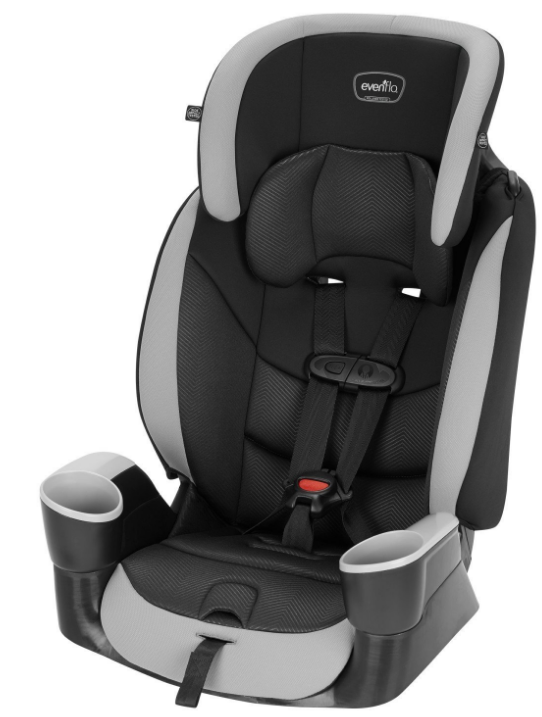
Content
Introduction
This post will look at the flexible and safe Evenflo Chase No Harness Booster Car Seat 350124, meant for growing youngsters. Perfect for children weighing 22–110 pounds, this booster seat moves from a forward-facing harness to a belt-positioning booster. For ease, it boasts a machine-washable seat pad, inbuilt cup holders, and a movable headrest. Meeting or surpassing federal safety criteria, the Evenflo Chase Booster Car Seat provides your child with consistent comfort and protection during every trip. Priced at approximately $45.99 this booster seat is an affordable solution for parents who prioritize their child's safety. The anticipated launch date for this product is set for May 2023.
Visual Glossary
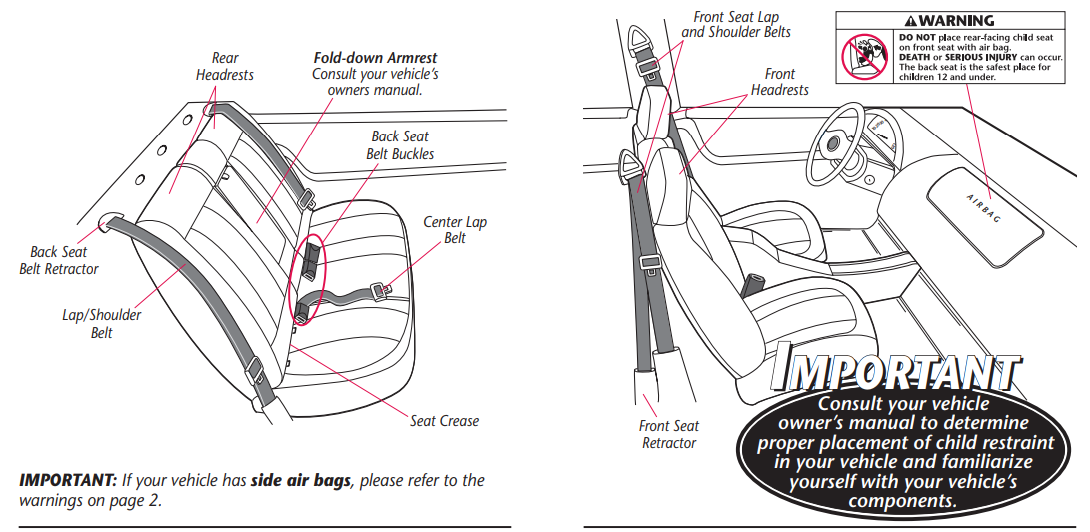
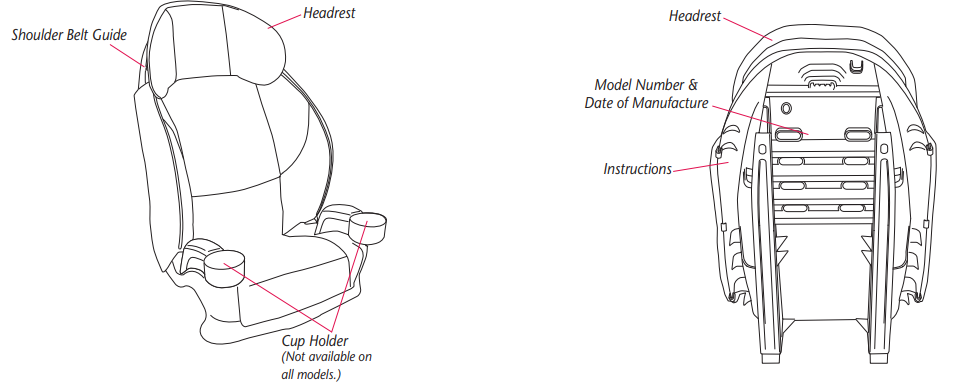
Detailed Specifications
Key features of the Evenflo Child Booster Car Seat include:
- Two integrated cup holders
- Easy-to-read level indicator for proper installation
- Multi-position height adjustment with 6 height options
- Energy-absorbing foam liner for enhanced side impact protection
- Machine-washable seat pad and harness covers
- Multiposition backrest for customized comfort
Description
The six height positions on the Evenflo Chase No Harness Booster Car Seat 350124 allow it to grow with your child as their needs do. Parents may rest easy knowing their child is safe because of the seat's side impact protection and energy-absorbing foam liner. This booster seat guarantees a snug fit in your car with its simple installation procedure and easy-to-read level indications. With its two cup holders, machine-washable fabric, and multifunction backrest, the Evenflo Child Booster Car Seat is a pleasant and useful option for parents and kids alike.
When to Put Your Child in a Booster Seat
Booster seats raise the child up and help to position the vehicle lap and shoulder belt correctly. When the child is properly restrained in a booster seat, their risk of injury in all types of crashes is reduced, as the lap and shoulder belt provides excellent restraint of both the upper and lower torsos. It is important for the child to sit properly within the vehicle seat belts. When the vehicle seat belt is buckled, the lap belt should be low on the hips, just touching the thighs, and the shoulder belt should lie across the middle of the shoulder. If the child leans out or moves the belt behind the back or places it under the arm, it will not provide the intended restraint.
There are a number of things to consider when deciding whether the child is ready to sit in a booster seat, including: the weight and height ratings on their current child seat, the child’s own weight and height, their maturity, and the seating positions available in your vehicle.
How is a booster seat used?
Using a booster seat is very similar to buckling yourself into the vehicle:
- Read the instruction manuals for both the booster seat and the vehicle before you start.
- Put the booster in the back seat in a location with a lap and shoulder belt. Never use a booster with only a lap belt, as this could cause serious injuries.
- After the child is in the booster, pull the lap and shoulder belt across him/her and buckle it.
- Check that the shoulder belt lies across the middle of the shoulder and that the lap belt is low on the hips, just touching the thighs.
How can you tell if your child is ready to transition to a booster seat?
You should consider using a booster seat if the following conditions apply:
- The child is mature enough to sit in the booster seat and not put the belts under their arm or behind their back.
- The child is approaching the weight or height limit of the child restraint they are currently using.
If you have a vehicle that does not have a tether anchorage but has lap/shoulder belts available in the back seat, a booster seat may provide better protection than an internal harness seat without the tether.
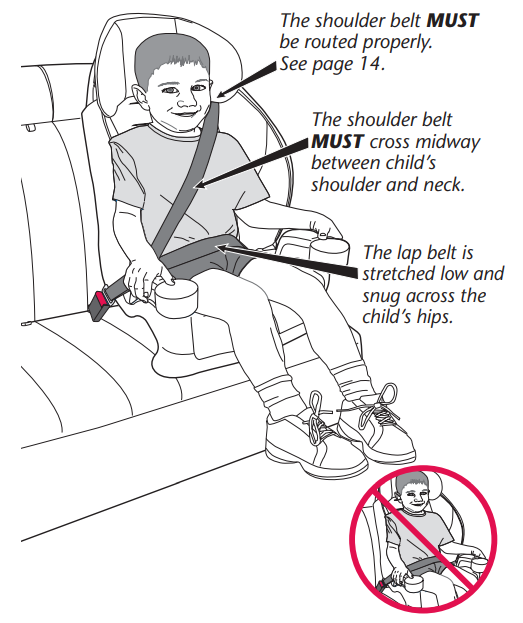
IMPORTANT: Always secure the booster seat with the vehicle seat belt when not occupied. An unsecured booster seat can fly into and injure other occupants in the event of a crash.
Using the Booster Seat
Child Requirements
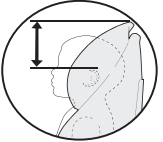
- Weight: 18 to 49.8 kg (40 to 110 lbs)
- Height: 110 to 145 cm (43.3 to 57 inches) tall AND the tops of the child’s ears are at, or below, the top of the child restraint headrest.
- Age: At least four years old
IMPORTANT: Always secure the booster seat with the vehicle seat belt when not occupied. An unsecured booster seat can fly into and injure other occupants in the event of a crash.
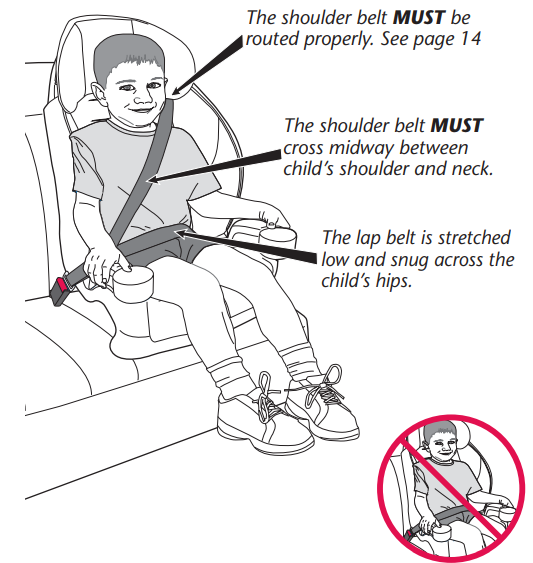
Booster Installation Checklist
- Secure booster seat to the vehicle seat. Make sure the bottom and back of the booster seat are touching the vehicle seat and back.
Place the child in the booster seat. Make sure the child’s back and bottom are flat against the back and bottom surfaces of the booster seat.
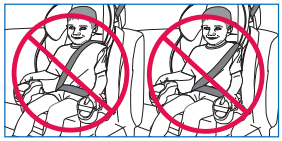
- Secure child and booster seat to vehicle seat.
- Stretch the lap/shoulder belt across the child and fasten the buckle.
- The shoulder belt MUST be routed properly (p. 14).
- Make sure the shoulder and lap belts are threaded under the red lap belt guide.
- Check your work. Make sure the lap belt is stretched low and snug across the child’s hips, within the belt guides, and fastened into the buckle. The shoulder belt must cross the child midway between his/her shoulder and neck.
WARNING: The shoulder belt MUST NOT cross the child’s neck or fall off the child’s shoulder. If you cannot adjust the shoulder belt to properly lay midway between the child’s shoulder and neck AND at or above the shoulder, try another seating location or do not use the booster seat.
Shoulder belt routing while in booster mode
- While the seat is used in booster mode the shoulder belt must be routed over the child’s shoulder.
The belt must pass under the head rest, between the head rest and the seat as long as the child’s shoulders are at or below the opening between the head rest and shell.

If the child’s shoulders are high enough that routing the shoulder belt under the head rest causes the belt to be pulled down the back side of the child’s shoulder (before passing through the head rest), the belt should not be routed between the seat and the headrest.
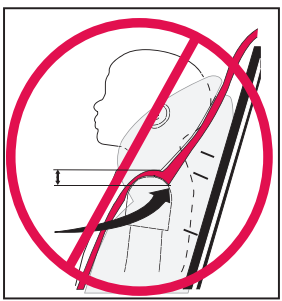
If the shoulder height causes the belt to route behind the back and the top of the ears are still at or below the top of the head rest, the shoulder belt should be routed on top of the head rest.

Setup Guide
To set up the Evenflo Chase No Harness Booster Car Seat 350124, follow these steps:
- Choose a level surface for installation.
- Adjust the seat to the proper height for your child.
- Secure the seat using the vehicle's seat belt or LATCH system.
- Ensure the belt fits snugly across your child's lap and shoulders.
- Properly position the multifunction backrest and adjust the headrest as needed.
General Information
- Installing the Cup Holders
Place each cup holder onto the seat, then turn the seat over and secure each cup holder with a screw, as shown. Make sure each cup holder is attached securely in place.
Note: Do not overtighten the screw or use a power tool to install.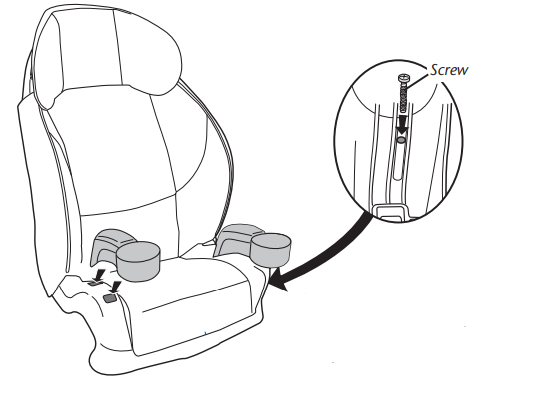
- Removing Seat Pad
Disconnect six J-clips and two retaining strips. Remove the seat pad.
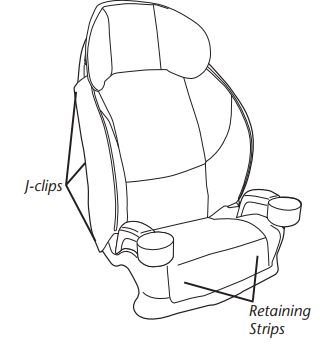
Replacement Parts
You can order replacement parts online at www.evenflo.com or contact Evenflo. When you contact us, please have the product model number and date of manufacture (found on the back of the child restraint).
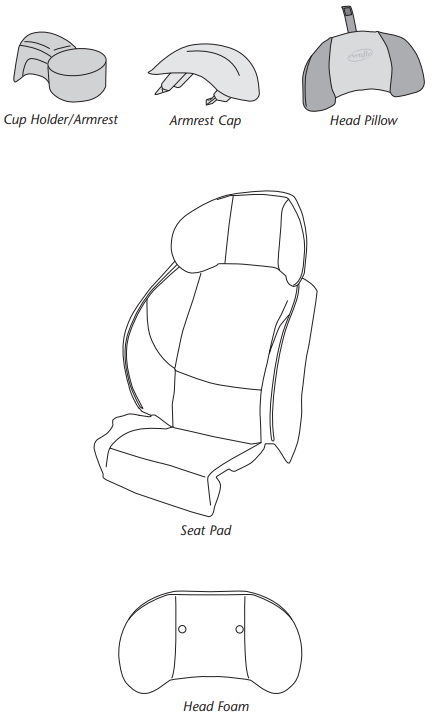
Proper Disposal of This Child Restraint
At the end of this child restraint’s useful life, Evenflo encourages you to dispose of it properly. Most of the components in this child restraint are recyclable.

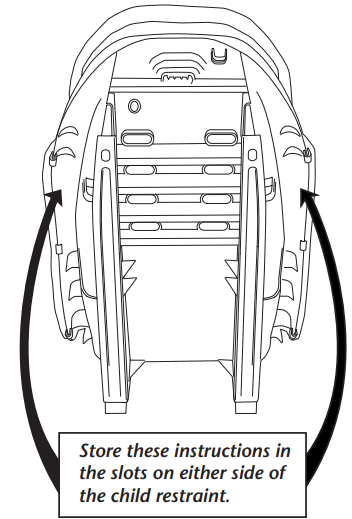
- Remove all fabric and padding.
- Remove all screws and disassemble the restraint.
- Recycle all plastic/foam parts and discard the rest. If your local recycling center will not accept the padding, you may dispose of it in the landfill.
Note: Evenflo uses recycled materials in the manufacturing process whenever possible but never for components that are critical for safety. To prevent injury due to hidden damage, lost instructions, outdated technology, etc., discontinue use of this restraint after the date on the Date/Model label (below) OR if it has been involved in a crash.
Troubleshooting
Common problems and solutions for the Evenflo Chase No Harness Booster Car Seat 350124 may include:
- Issue: Seat feels loose or improperly secured
Solution: Double-check the installation using the level indicator and ensure the seat belt or LATCH system is correctly engaged. - Issue: Harness is too tight or too loose
Solution: Adjust the harness according to the manufacturer's instructions, ensuring a snug and secure fit across your child's lap and shoulders.
Warranty
For a period of 90 days from the original purchase of this Product, Evenflo warrants to the original end user (“Purchaser”) this Product (including any accessories) against defects in material or workmanship. Evenflo’s sole obligation under this express limited warranty shall be, at Evenflo’s option, to repair or replace any Product that is determined to be defective by Evenflo and determined to be covered by this warranty.
Evenflo Chase No Harness Booster Car Seat 350124 Pros & Cons
- Pros:
- Affordable price
- Grows with your child
- Excellent safety features
- Easy installation
- Machine-washable fabric
- Cons:
- May not fit in smaller vehicles or tight spaces
- Bulky when not in use
- Cupholders may not accommodate larger drinks
Customer Reviews
The price and safety features of the Evenflo Chase No Harness Booster Car Seat 350124 have won over many parents. Some claim, however, that the seat is too big for small cars and might not accommodate three people in larger SUVs.
Faqs
Which characteristics make the Evenflo Chase No Harness Booster Car Seat 350124 stand out?
What are the Evenflo Chase No Harness Booster weight and height requirements?
How simple is it to install the Evenflo?
Are there cup holders on the Harness Booster Car Seat?
Is it possible to remove the Evenflo pad for cleaning purposes?
Is the Car Seat with No Harness Booster subject to crash tests?
If my child is ready to move from the harness mode to the booster mode, how can I tell?
How does the Evenflo 5-point harness system operate?
Can I use the Evenflo Chase No in the front or back seat of my car?
What is the Car Seat's expiration date?
Leave a Comment
